Yo-Kai Watch Review - Pokemon Has Nothing To Worry About
Gorgeous and charming, but sadly, incredibly boring.
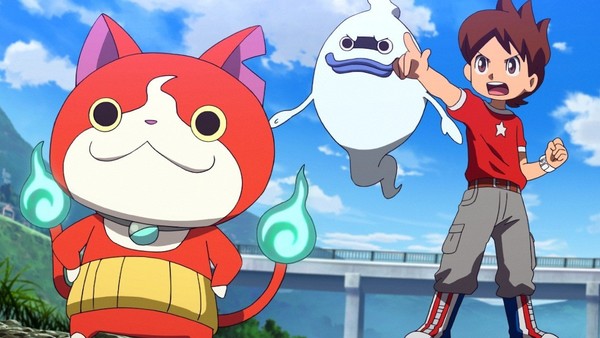
Rating: ★★★★Length: Approx. 20 hours (Main story, occasional grinding, minimal side-quests)Platform & Performance: Nintendo 3DS - Flawless.
For the longest time in gaming, not one franchise has truly risen to pose a threat to Pokémon's well-deserved crown. Sure, we've seen creature-catching mini-games in the likes of Dragon Age or Ni No Kuni and similar experiences like Digimon or Yu-Gi-Oh! do their damnedest to make an impact, but nothing, truly, has usurped Game Freak's spot at the top of the pile.
Enter Yo-Kai Watch, the latest kid-friendly RPG from legendary code-crafters Level-5 (who you'll know from the aforementioned titles Dragon Quest and Professor Layton), hitting European shores and taking another shot at reining in any lapsed Poké-fans.
Colourful creatures to collect and battle with? Check. A series of cute characters and villages where both human and beast co-exist? Check. Tactical battles, grinding, evolutions and even fusions you achieve after gaining multiple levels? Check and triple check - hell, a two-tone ball with a creature inside even kickstarts the story.
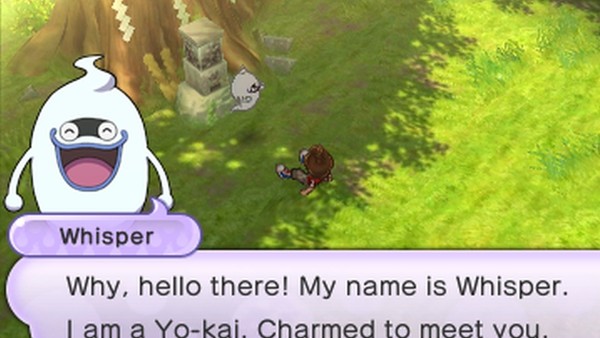
It would be shameless, if it wasn't so damn charming. Level-5 have always had a deftness with their animation and character design, in a way that almost makes them the Studio Ghibli of gaming. Here in Yo-Kai world, your custom-named child hero comes across the titular object (an actual watch), which lets him or her see the supernatural 'Yo-Kai' that are hidden all around us.
Now, this, is the really good stuff, because if the overall gameplay was less repetitive and quests more well designed, Yo-Kai would be a bonafide hit. See, being that the Yo-Kai are everywhere, like, right now, they can stand in for the answers to many a child's biggest life questions.
Why is someone not in a good mood? Why are my parents fighting? Why was my classmate mean to me, and how could I forget where I put that really important thing?
See where I'm going with this? It's perfect fodder for children, almost Pixarian in its execution of making the ordinary seem that little bit more extraordinary, and therein lies Yo-Kai Watch's greatest success.
Helper-character Whisper is pretty much a stand-in guardian, too, mentioning how it's always worth listening to your parents, how you should watch for traffic when crossing the road, or how it was "So nice of that person!" to give you an item. It's sugar-sweet, peace symbol-throwing youngster anime at its finest, and at its heart, positively sweats good intentions and everyday morality.
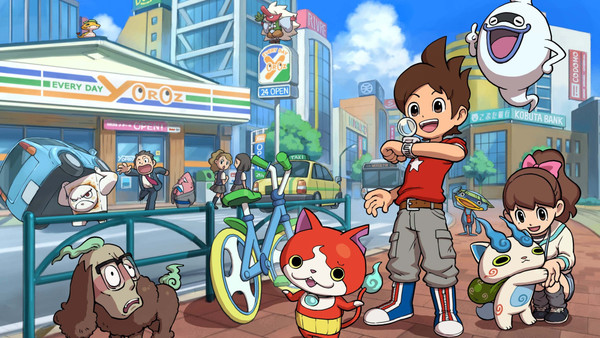
However, once you get down to gameplay, that pedestrian nature crosses over entirely. Aside from a brief stint somewhere else near the close of the game, Yo-Kai's 20-hour story is set within the confines of its various connected villages alone, reconciling 90% of what you're doing to fetch quests and 'favors' for the townsfolk. More than 10 hours in, I was still being told to retrieve a particular item, but before the person in possession would hand it over, I'd have to get something else for them. That place I was led to had a 'Watch Seal', so I'd have to go make my equipment more powerful, and that meant grinding and finding more items. It's just - and it really is a shame - unbelievably boring.
It ends up putting you in a mindset where everything feels like busywork, and as your main character and Whisper are always so chipper about retrieving everything from pieces of additional information to an old man's underpants (yes, really), it removes the option to turn people down in favour of getting on with the combat.
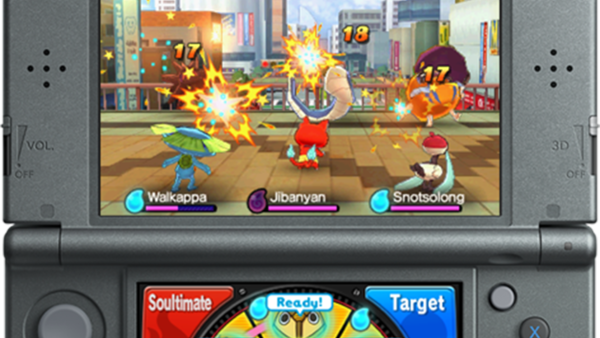
Speaking of which, battling is a real mixed bag. Unlike Pokémon, you'll not be able to capture everything you come across, but frequently, various Yo-Kai in the world will want to be friends after you've given them a thrashing, resulting in their signature medal being added to your Medallium (totally not a Pokédex). From here, you can equip six Yo-Kai for your team, which can be rotated to allow three on the field at any given time.
Battles aren't turn-based as such. Instead, your Yo-Kai will auto-attack while you hang back and either tell them to do 'Soultimate' moves (special attacks like melee flurries, status-boosts etc.), heal with items, manually target creatures or weak spots, and occasionally 'Purify' any who have become 'Inspirited' (another status effect).
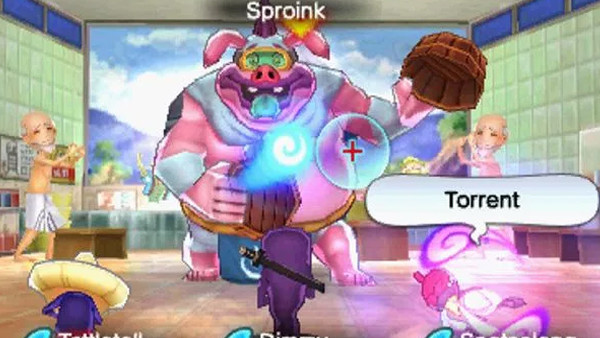
Almost every battle will go like this: Enter, trigger a Soultimate attack, watch a very well-animated fireworks display of punches, slashes and visual flourishes, then finish the remainder with a standard hit. Soultimates have minigames attached to pulling them off, but there are only three for the game's entire runtime. They see you tapping icons, drawing patterns or spinning a symbol on the stylus, and it's here that the real tedium sets in.
See, despite their necessity as the most unique attacks you have at your disposal, and what will turn the tide of battle, these animations render you (the player) useless for a few seconds, even after you've completed their requisite inputs, meaning that because battles are semi-real time, you can still get squashed by something whilst waiting on the "Success!" screen. Maybe healing items need to be dolled out, perhaps you want to switch targeting for your other Yo-Kai who are still wailing away on the wrong part of an enemy - it doesn't matter, you can't, and as boss fights in particular are much harder than regular foes, it gets very frustrating, very fast.
Speaking of the bosses though, this is where the system shines brightest. By having your posse of six on a rotating wheel and seeing buffs from certain creatures like healing adjacent Yo-Kai, you can start rotating the wheel, bringing in your 'reserve' troops, yet keeping two-thirds of your main squad dealing damage. Boss fights are the only time where you'll need to deploy any real tactics, hopping between weak spots and killing support characters before they can buff any party-wiping special attacks.
It makes you realise that under the hood, all the allusions to balancing your party, considering the 'moods' your Yo-Kai are in, who they work best with and where they should be placed on the wheel can make some modicum of difference, but it's very under-utilised - perhaps intentionally, considering the youthful demographic.
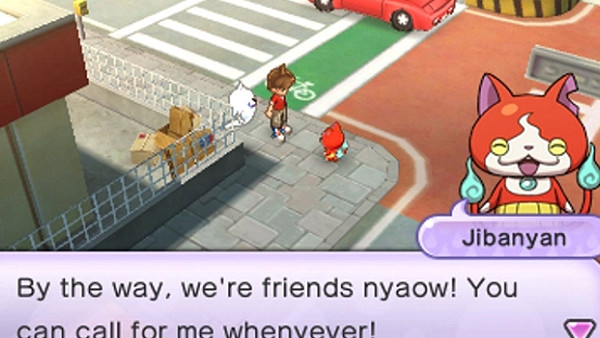
However, even if you assume that a younger audience will delight in watching the visuals pop off, I think the constant repetition of the minigames and fetch-quests will drive them away.
Coming from a Japanese manga, Yo-Kai Watch has been out in its native land since 2013, followed by the US and most recently, the EU. In that time it's become something of a cult success, already spawning many sequels, movies and additional TV shows. It proves there is an inherent charm to its world and killer premise (who doesn't want to believe there's some mystical force at play when their parents get mad?), but its one that when the comparisons to Pokémon are so obvious, only makes you long for the return of the one true king.
I have no doubt the intention is to make children see their world a little bit differently; singing the cheesy Yo-Kai theme tune, wearing the branded watch and starting to look around their houses for hidden creatures - which in itself might be worth the price of admission for parents - but for me, the gameplay just wasn't there once that initial charm had worn off.
What do you make of Yo-Kai Watch? Let us know in the comments!